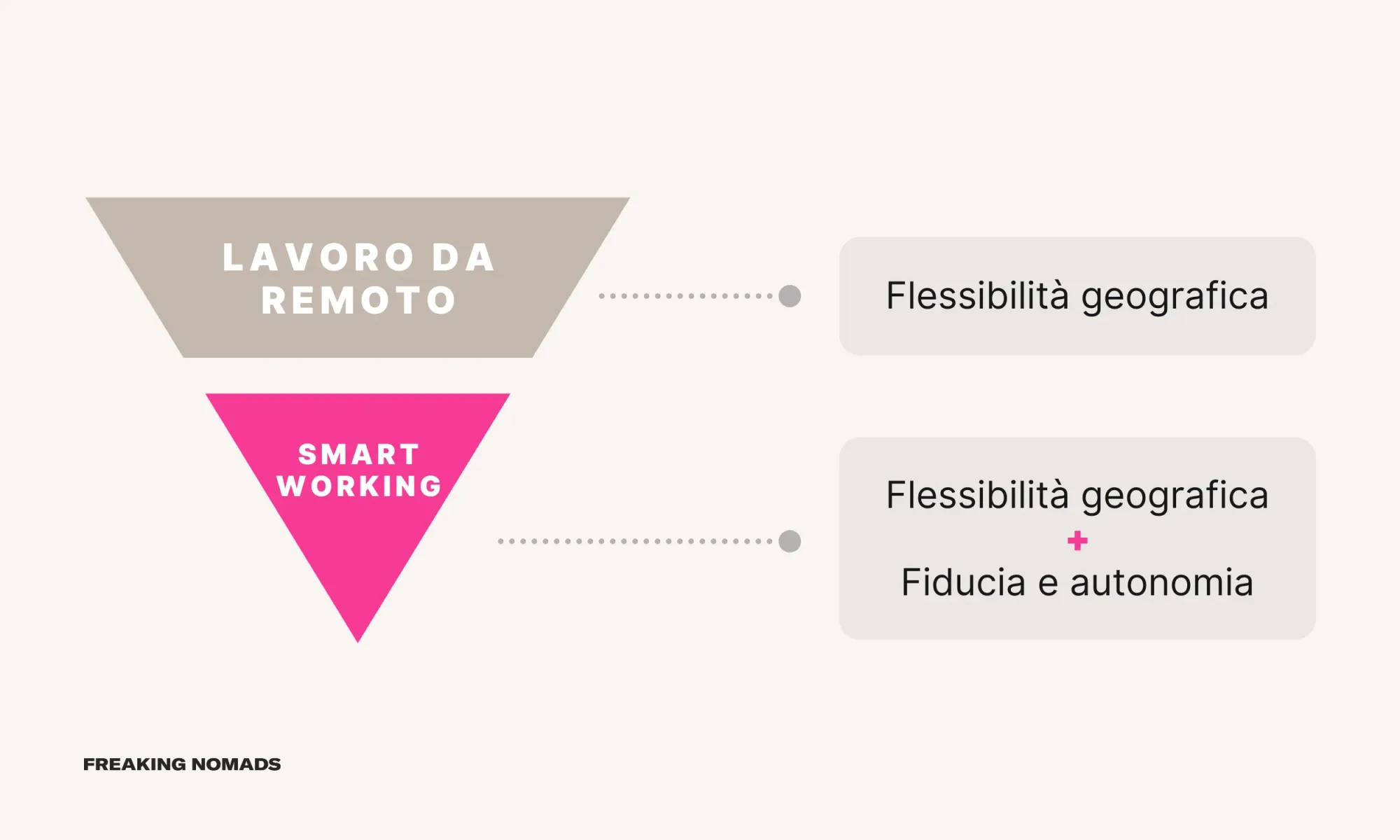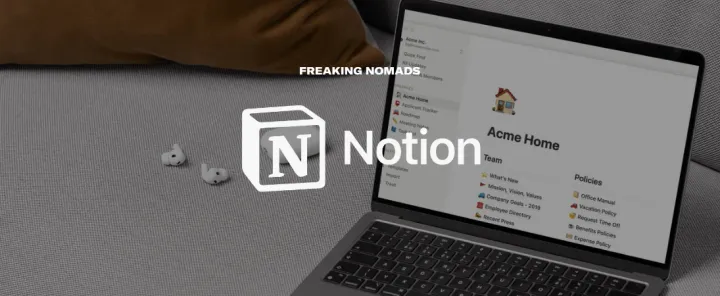Smart working vs Remote Working: What's the difference?

More people are opting out of the traditional office setup these days. In fact, Forbes reported that the percentage of U.S. companies offering more flexible work options rose from 51% at the beginning of 2023 to 62% by November. And many smaller and faster-growing companies are adopting flexible work to attract and retain top talent.
So yes, we're witnessing a major shift—remote working and smart working are quickly becoming the norm. But what exactly is the difference between the two? Though we often hear "remote working" and "smart working" used interchangeably, they actually refer to different setups.
In this article, we’ll explore both models, looking at their benefits and challenges, to help you figure out which one might suit your needs better.
What Are the Differences Between Remote Work and Smart Work?
The terms might get tossed around a lot, but don't get them mixed up—remote work and smart work are quite different from each other.
Remote work is all about doing your job from anywhere but a traditional office. Thanks to technology, you can communicate and collaborate with your team whether you’re at a coffee shop, your home office, or even on the road. Essentially, it gives you the freedom to choose your workspace.
Smart work, instead, digs a bit deeper. It's not just about where you work but how you work. This approach involves tweaking the processes and tools you use to get your job done. The goal? To boost productivity, increase flexibility, and make sure everyone’s feeling good about their work life.
So, what's the difference?

Imagine a ladder where each rung represents a level of how we can work today:
- On the first rung, we have remote work, which offers significant geographic flexibility. This style allows employees to work from anywhere that has an internet connection.
- Moving up to the second rung, we find smart work. This approach builds on the flexibility of remote work by adding a reorganization of work based on trust, autonomy, and responsibility.
In both cases, technology plays a pivotal role. Tools for communication, collaboration, and project management are critical for effective performance, regardless of physical location.
To help clarify the differences between these two modern work styles, let’s break down each one, highlighting their unique aspects:
| Remote working | Smart Working | |
| Focus | Where you work | How you work |
| Flexibility | High | High |
| Outcome | Not necessarily planned | Primary objective |
| Process | Not necessarily redesigned | Require redesign |
| Output measurement | Difficult | Easier |
Let's now take a look at them one by one.
What is Remote Working?
Remote working, also known as telecommuting, lets you tackle your job duties outside a traditional office—this could be your airbnb in Chiang Mai, a cozy corner in a cafe in Bali, or a sunny spot at a co-working space in Kuala Lumpur. This way of working hinges on using technology to keep in touch and collaborate with your team, no matter where you are.
But it's more than just a break from the nine-to-five routine, remote work is a mindset. It's built on trust and personal responsibility, placing high value on independence and your ability to manage yourself.
What Are the Benefits of Remote Working?
Remote work comes with some pretty appealing perks, but it's good to look at both sides to see if it's right for you. Here's what stands out:
Flexibility
Remote work offers the freedom to manage your own time and workspace, allowing you to adjust them according to your personal needs and life's pace. We digital nomads, in particular, thrive under this model, leveraging the freedom to work from virtually anywhere in the world. We can finalize a presentation from a cozy café in the morning and take a conference call from a beachside hammock in Bali as the sun sets. This flexibility can lead to improved work-life balance, making it easier to juggle personal commitments and professional responsibilities without the commute.
Better work-life balance
Remote work can help you achieve a better balance between your personal life and your career. By spending more time on your passions, your loved ones, or simply yourself, you can boost your happiness and sense of fulfillment. Say you’re someone who loves to surf, remote work might allow you to live near the beach and catch the early morning waves when the conditions are best. After your surf session, you can head back, dry off, and start your work day feeling energized and focused. This flexibility means you can work on the go, traveling to new surf spots during the low season, and tackling work tasks when you feel most alert and productive.
Significant savings
The most recent data show the average American commuter spends around 25.6 minutes on the way to work each day—that’s nearly an hour each day spent getting to and from work, and it really adds up.
But with remote work, you can say goodbye to your daily commute, gas expenses, public transit passes, and eating out for lunch. Working remotely can help you save a considerable amount each year, which you could redirect towards travel, new experiences, or simply enhancing your quality of life.
Increased productivity
One of the underrated perks of remote work is the reduction of common office distractions. No more useless interruptions at your office desk, or small chat during coffee breaks when you're under pressure to submit your work. When you set up a dedicated, quiet workspace at home, you might find it easier to focus and get more done. For example, if you're deep into SEO specialist or UX design, the peace of your own space could mean more productive coding sessions and sharper focus on your projects.

Expanding opportunities
Remote work doesn't just free you from the daily commute, it also unlocks a world of opportunities. Suddenly, you're not confined to the jobs available in your local area. You can work for companies across the globe, which can dramatically broaden your experience and skill set. And who knows, you might even find better salaries.
What Are the Disadvantages of Remote Work?
But all that glitters is not gold. As much as remote work can change our lives for the better, offering unprecedented flexibility and freedom, it comes with its own set of challenges.
Risk of isolation
We're human beings, and we're social beings. So yes, one of the biggest challenges of remote working is the risk of feeling isolated. When you're working from home, away from the buzz of an office, it can get lonely. It’s important to find ways to connect, whether that’s through regular video calls with colleagues, participating in virtual events, or engaging with communities of digital nomads and remote workers.
Difficulty in separating personal and work life
When your home doubles as your office, it can be tough to draw the line between work and personal time, especially if you're working from a lively café or a bustling co-working space. It’s crucial to set up a dedicated work area and make a conscious effort to switch off at the end of the day, so you don’t feel like you’re always at work.
Self discipline is a must
Remote work really tests your self-discipline and organizational skills. It's all about structuring your day effectively, prioritizing tasks, and steering clear of distractions to stay on top of your game. If you're a personal who isn't really organized, it's time to catch up. You could use tools like Todoist or monday.com to clearly set goals and tasks for the day.
Technical issues

Nothing throws a wrench in your workday like a spotty internet connection or a glitchy computer. Reliable tech is non-negotiable—you need a solid internet connection and tools that won't fail you when you need them most. Maybe your whole neighborhood's internet connection goes off the day you have a deadline, or maybe you're traveling and realize the cafe's Wi-Fi isn't working at high speeds.
What is Smart Working?
Smart working, or agile working, is more than just an advanced form of remote work. It's a complete philosophy focused on achieving goals with maximum flexibility—not just where you work, but also when and how you work. This approach goes beyond traditional remote work by introducing a shift in workplace culture that both companies and employees need to embrace.
Smart working is built on four key elements:
- Flexible Hours: You get to set your own schedule based on what suits your lifestyle and natural work rhythm best.
- Flexible Locations: Whether it’s from an office, your home, a co-working space, or even a café, you choose your workspace.
- Flexible Technological Tools: You have the freedom to choose the tech tools that fit your specific needs, enhancing your efficiency.
- Flexible Organization: You manage how you organize your tasks, setting your own priorities and methods.
What Are the Benefits of Smart Working?
Smart working gives you the freedom to work where and when it suits you best, helping you match your professional life with your personal rhythms and needs. Here are some of the key benefits it brings:
Improved work-life balance
One of the biggest perks of smart working is the flexibility it offers in how and where you spend your working hours. This can make a huge difference in how well you balance your job with your personal life. For example, it might mean being able to start work earlier so you can attend a yoga class then catching up on work in the evening, or dropping off your child at tennis practice. You get to shape your work schedule around what’s important to you.
Increased productivity and motivation
When you're working in an environment that you've chosen, one that’s free from the usual office interruptions, it’s easier to focus and get things done. Being able to set your own schedule and work environment means you can tailor your day to fit your lifestyle, which can be incredibly motivating. It doesn't matter if you're an early bird or a night owl, tasks become more engaging because you're handling them in your peak productivity periods.
Employee empowerment
Smart working naturally encourages you to take more control of your day. You’ll need to be proactive about how you manage your time, set priorities, and tackle your tasks.
Cost reduction
Just like for remote work, a major perk of smart work is how much money it can save everyone involved. Employees like you and me can cut down on commuting costs, whether that’s gas for the car or daily train tickets, not to mention saving on those lunchtime takeouts. A study shows that US employees can save as much as $4,500 on commuting costs per year...sounds like a nice vacation to me! Meanwhile, companies can reduce or even ditch the expenses tied to maintaining a physical office space.
Besides financial savings, smart working can also bring:
- Enhanced job appeal to top talent
- Reduced absenteeism
- Increased employee satisfaction
What Are the Challenges of Smart Working?
It's not all sunshine and rainbows for smart work either. While smart working has many benefits, it’s not without its challenges:
Need for organizational reorganization
Adopting smart working means a company must undergo cultural and organizational changes. Work processes, communication methods, and how performance is managed might all need an overhaul. For example, a tech firm accustomed to daily in-person meetings might need to switch to digital check-ins that accommodate flexible schedules.
Trust is a must
This style of work relies heavily on trust. Nobody wants to hire a person on a smart working contract only to realize the employee is skipping the work part. Employers need to trust that employees will work independently and effectively without constant oversight. Consider a marketing professional tasked with creating a campaign largely on their own—there needs to be confidence that they’ll deliver quality work on schedule.
Difficulty in measuring productivity
In a flexible work environment, it’s often more challenging to assess productivity and outcomes. It’s essential to develop new ways to monitor and evaluate performance. Setting clear, quantifiable objectives for remote workers and regular progress reviews can help ensure everyone is aligned and accountable.

Which Work Model Suits Me Best?
There’s no one-size-fits-all answer here. Figuring out the best work model for you is a personal journey that requires some soul-searching and thoughtful consideration.
If you crave flexibility and autonomy, remote work might be just what you need. If you're a digital nomad like us, for example, this means you get the freedom to choose your workplace and schedule. You could be updating a project from a café in Prague in the morning and catching a flight to your next destination in the evening, all while meeting your deadlines.
But if you’re looking for a way to balance work with personal life within a structured setup, then smart working could be a better fit. Say you're a parent who needs to manage both professional responsibilities and family life. Smart working could allow you to start your day early, pause to take your kids to school, then log back in from a home office or even a local co-working space that’s close to your child’s daycare. This model supports not just where you work, but also when and how, making it easier to juggle those responsibilities without sacrificing career progress or family time.
Here are a few things to think about to help you decide:
- Your Preferences: How do you like to work? Do you thrive in a flexible environment, or do you prefer the predictability of an office setting?
- Your Needs: How much time and space do you need to perform your best?
- Your Lifestyle: How do you balance work and personal life? Do you need flexibility to manage family or personal commitments?
- Your Job: Can your tasks be done remotely, or do they require being in an office?
- Your Company: Does your employer support remote or smart working options?
Trust your gut, assess your needs, and try out different options. That’s the only way to truly find the path that leads not only to professional success but also to personal satisfaction.
Remember, you’re not alone on this journey. Learn from the experiences of other digital nomads and smart workers, engage with your network, and don’t be afraid to pivot if something isn’t working out.
The world of work is always changing. Embrace the wave of change and find your ideal work scenario!
Ready to Make the World Your Office?
If you want more digital nomad guides like these, sign up for our free newsletter and get upcoming articles straight to your inbox!
Freaking Nomads is supported by you. Clicking through our links may earn us a small affiliate commission, and that's what allows us to keep producing free, helpful content. Learn more







 Travel tips, hacks, and news
Travel tips, hacks, and news Exclusive travel discounts
Exclusive travel discounts Offers and promotions
Offers and promotions Digital nomad inspiration
Digital nomad inspiration Latest articles form our blog
Latest articles form our blog
Comments ()